Christian Wahl Bust Returned to Lake Park
"Grandfather" of Milwaukee's park system is again honored at park he helped build.
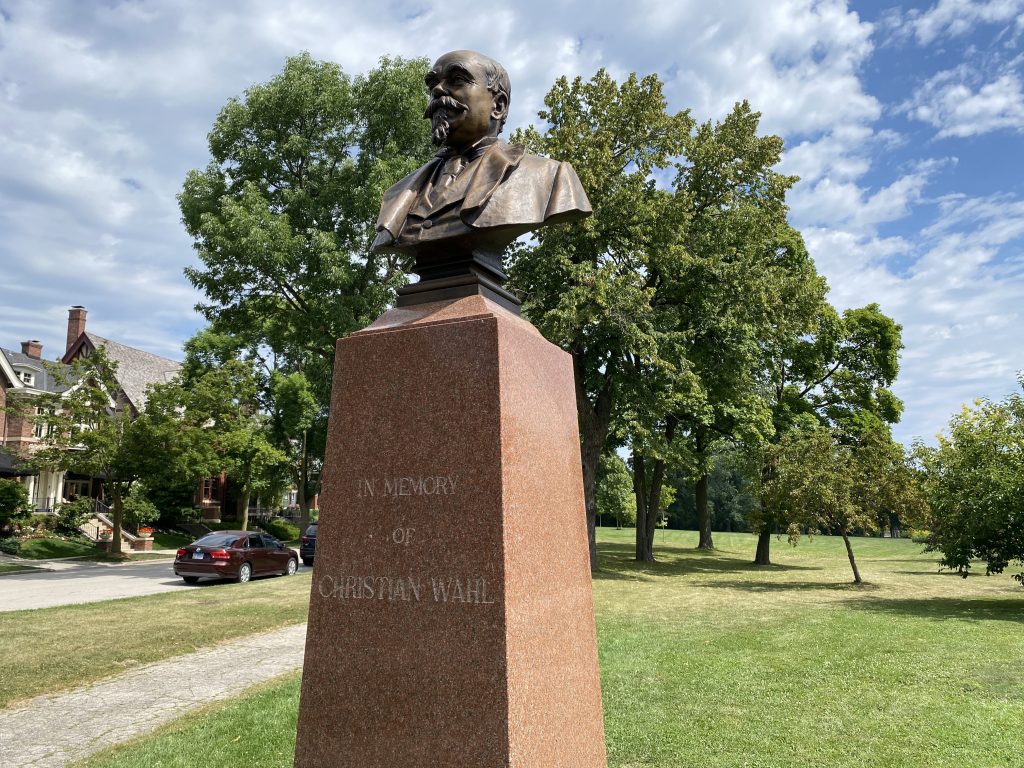
Bust of Christian Wahl in Lake Park. Photo by Graham Kilmer.
The “grandfather” of Milwaukee Parks has finally been returned to his beloved Lake Park. Well, at least his bust has.
A bronze bust of Christian Wahl, a 19th-century German immigrant to Milwaukee and the first president of the Milwaukee Parks Board has returned to Lake Park.
The bronze bust was sculpted by Gaetano Trentanove and placed in Lake Park in 1903. In 1956, a new park was added to the park system and named for Wahl. His bust was relocated there four years later. But this new park that bore his name was never an interest of Wahl, having been created 55 years after his death. Wahl’s true passion was Lake Park, and his obsession with the park played a part in his eventual fall from a position of authority in the parks system.
“Lake Park was Christian Wahl’s pride and glory: it was there he labored early and late, in season and out of season, to make it a model,” wrote Ellis Baker Usher, a journalist and politician alive during the creation of the parks system.
In 2020, Wahl Park was renamed Harriet Tubman Park by the Milwaukee County Board. Lake Park Friends sprung into action and raised funds to restore and relocate the bust. Vanguard Sculpture Services, 3374 W. Hopkins St., performed the restoration. The friends group is planning a ceremony and re-dedication of the sculpture.
Wahl immigrated with his parents from Bavaria to the U.S. in 1846, according to a history of the county published by the Milwaukee County Historical Society. His family settled on a farm in the old Town of Lake and later Wahl left for Chicago. There he found success in business and public affairs, serving on city council and the board of education. Upon retirement, he returned to Milwaukee.
During the final two decades of the 19th century, Wahl was part of a large push by Milwaukee politicians and business leaders to establish a city parks system. Wahl himself was an advocate for a decentralized system with a constellation of parks throughout the city, as opposed to a large, singular park like New York City’s Central Park.
With new authority granted by the state legislature, Wahl was appointed the first president of the Park Board in 1889. The board set about acquiring land and directing the creation of the parks system, selecting the sites of the first seven public parks. These parks included Riverside, Mitchell, Kosciuszko, Humboldt, Washington, Sherman, and Lake.
A 1924 Milwaukee Journal piece called Wahl the “Father of Milwaukee Parks” and said he performed his “public services” at a time “when Milwaukee as a city first groped after beauty, when the prosperous city came to realize that in replacing forest trees with factories it had lost an essential element, when there was an awakening to the necessity for beauty in everyday life.”
Lake Park would become an obsession for Wahl. He maintained frequent correspondence with the park’s designer, Frederick Law Olmsted. Anne “DeDe” Neal Petri, president and CEO of the National Association of Olmsted Parks, has said that letters from the famous landscape architect indicate Wahl became a close family friend. Olmsted even notes during one visit to Milwaukee that Wahl was “introducing him to some mighty good Beer,” Petri said.
Wahl would become so intimately involved in the planning and development of the park that his behavior became an annoyance for other park officials and politicians. Today Wahl might be accused of micro-managing. At the time, a Milwaukee alderman said he should not “stand beside a laborer digging a hole and watch each shovelful.” Mayor David Rose felt compelled to say that the public should remember that Wahl was not, in fact, the designer of the park.
By 1899 Wahl had lost the political favor necessary to keep his seat on the parks board. But before resigning, he managed to have the street that runs along a section of the park renamed Wahl Avenue. He died two years later.
His bronze bust can now be found near the intersection N. Wahl Avenue and E. Belleview Place. Inscribed on the back of the red granite plinth is “He gave his ripest years and study to the parks. Rewarded alone by grateful remembrance.”
If you think stories like this are important, become a member of Urban Milwaukee and help support real, independent journalism. Plus you get some cool added benefits.
MKE County
-
Should County Create New Bus Fund?
 Mar 4th, 2025 by Graham Kilmer
Mar 4th, 2025 by Graham Kilmer
-
MCTS Expands Same-Day Paratransit Service
 Mar 3rd, 2025 by Graham Kilmer
Mar 3rd, 2025 by Graham Kilmer
-
County Expands Lead Abatement For Low-Income Homes
 Mar 1st, 2025 by Graham Kilmer
Mar 1st, 2025 by Graham Kilmer


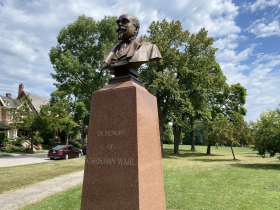
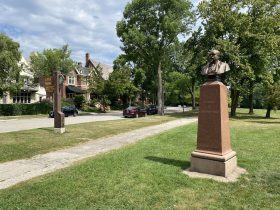
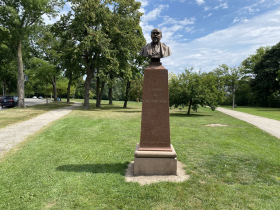
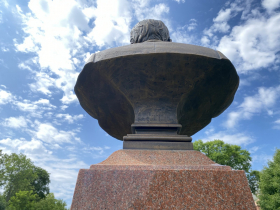
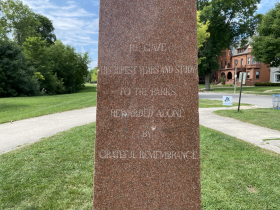
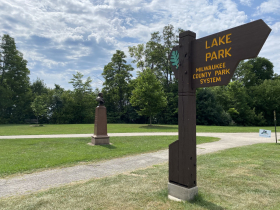

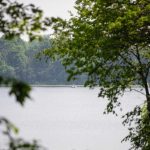

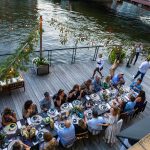















Christian Wahls “obsession” with implementing and improving every detail of Lake Park has served our community well.
I’m reminded of an old quote: “Good requires motivation, Great require obsession.”
As for today’s efforts to preserve Qlmstead’s vision by employing Wahl’s persistence, we owe abundant thanks to The Lake Park Friends for their continuing dedication to those goals.